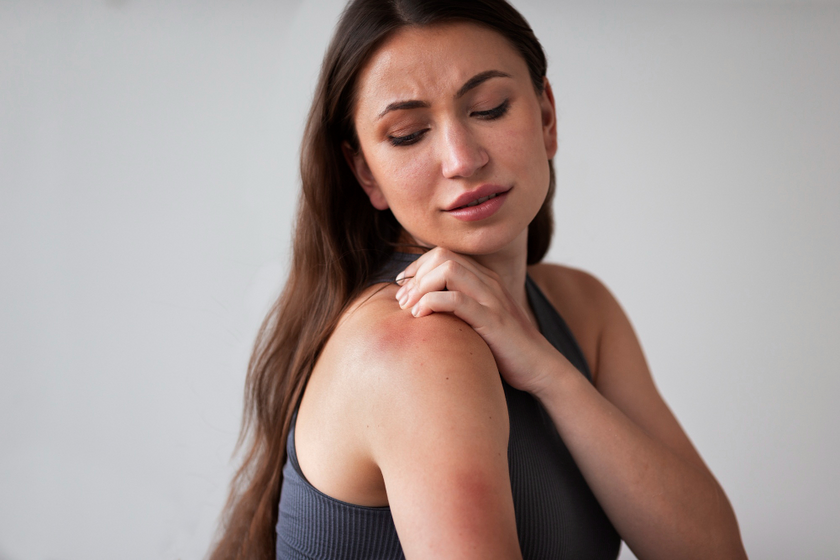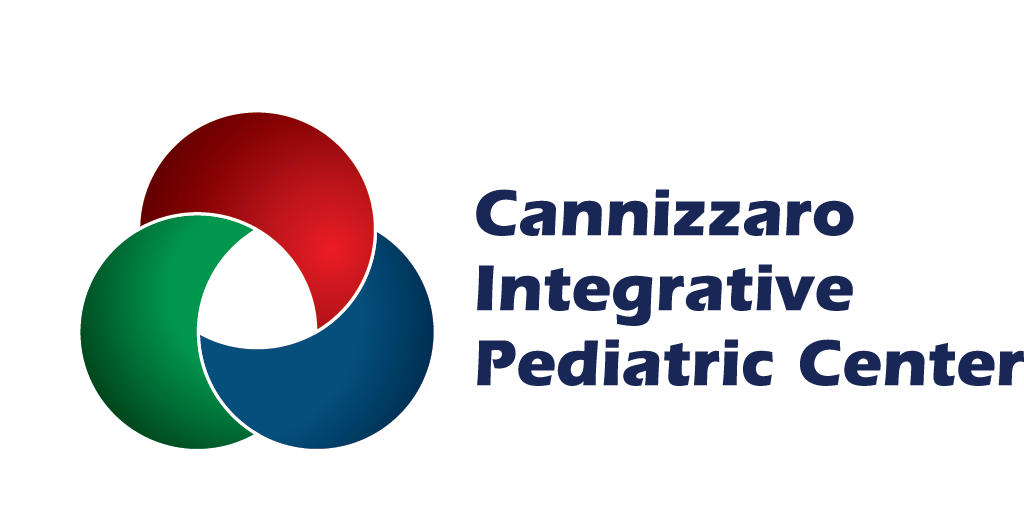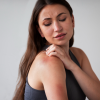
Eczema, also known as dermatitis, is a common skin condition characterized by inflammation, itching, and rash formation. There are several types of eczema, each with its unique characteristics and triggers. In this comprehensive guide, we will delve into the seven main types of eczema, exploring their symptoms, causes, common triggers, and treatment options, including the potential benefits of salt therapy in managing symptoms.
Atopic Dermatitis
Atopic dermatitis is the most common and can develop at any age, from infancy through adulthood. This type of eczema is the most difficult to treat and causes widespread inflammation with the associated dry skin and itching. It can run in families and is often linked to other allergic conditions such as asthma or hay fever. It is characterized by dry, itchy skin patches that may become red, swollen, and cracked. Common triggers include pet dander, pollen, certain foods, and harsh soaps or detergents.
The triggers cause an upregulation of the immune system which affects the skin barrier thus the treatment involves consistent skin care in the form of moisturization and treatment of infections caused by scratching. Gut repair and diet modifications are also important treatment modalities. Conventional treatment can include topical corticosteroids and antihistamines to manage itching. Salt therapy is a therapeutic option during flares to calm inflammation, remove toxins and promote skin healing.
Contact Dermatitis
Contact dermatitis is the second most seen type of eczema. There are two main types of this form: irritant and allergic. It gets its name from the fact that the skin must come in contact with the substance that triggers the allergic reaction. It typically does not run in families, nor is it linked to other allergic conditions.
At least 80% of all contact dermatitis is the irritant form. This occurs not through an allergic reaction by the immune system, but rather when skin cells are damaged by exposure to irritating substances. These substances can include cleaning agents, makeup, hair coloring, and metals such as those in jewelry, belt buckles, and clothing with snaps or zippers that rub against the skin.
The allergic form of contact dermatitis is a delayed allergic reaction from an exposure to the allergen and a rash develops 24 to 48 hours after the exposure. In our office, we are currently seeing kids come in with this type of eczema because the pollen counts are so high during this time of year. Additionally, contact with certain weeds, plants, vines, and even fragrances, nickel or latex can elicit this type of reaction.
Avoiding triggers and using corticosteroid creams are typical treatments for both types of contact dermatitis. A salt room visit can soothe irritated skin and accelerate healing by reducing inflammation.
Dyshidrotic Eczema
Dyshidrotic eczema, also known as pompholyx, primarily affects the hands and feet, causing tiny, fluid-filled blisters and intense itching. It not only dries out the skin but also causes a rash and burning sensation. Often, we see tiny blisters on the palms, fingers, and soles of the feet so it gets mistaken for hand-foot-mouth disease. The exact cause of dyshidrotic eczema is unknown, but we see it more commonly in those who have another form of eczema, and it tends to run in families like atopic dermatitis does. Factors like stress, sweating, and exposure to certain metals may contribute to flare-ups. This type of eczema lasts for approximately three weeks. Treatment often involves topical corticosteroids, antihistamines, and phototherapy. Salt therapy can help by reducing inflammation and preventing infection in the affected areas.
Neurodermatitis
Neurodermatitis, also called lichen simplex chronicus or discoid eczema is characterized by thick, scaly patches of skin that are intensely itchy. It is rare in children. This rash is not generally widespread but instead is confined to only 1 to 3 patches of skin. It can occur anywhere on the body but most often is seen on the lower legs, arms, hands, shoulders, neck, and scalp. It can be extremely itchy causing continued scratching which can irritate the nerve endings in the skin, making it even worse. Those affected by this type simply cannot avoid scratching. If the skin patches become chronic and the scratching continues these patches of skin become thick, dry, and have the consistency of leather. Another term for this is “lichenification.”
Stress and anxiety are common triggers for neurodermatitis, along with friction from clothing or rough surfaces. Topical corticosteroids, antihistamines, and relaxation techniques are often used to manage symptoms. A visit to the salt room can provide relief by calming the nervous system and reducing itching.
Nummular Eczema
Nummular eczema presents as coin-shaped patches of irritated skin that are often dry, itchy, and scaly. The skin eruption involves small circular or rounded lesions all over the body but predominately on the arms and legs. Sometimes the patches can ooze a clear or yellow fluid and the lesions form scabs. It is also itchy. It is often misdiagnosed because it resembles ringworm or other fungal infections. This type of eczema can occur in any age group.
The exact cause of nummular eczema is unclear, but it is believed to be linked to dry or sensitive skin, irritants, and environmental factors like cold weather. Common triggers include harsh soaps, wool clothing, and dry indoor air as well as trauma to the skin from things such as insect bites, chemical burns, or abrasions. Treatment typically involves moisturizers, topical corticosteroids, and antihistamines to alleviate itching. Salt therapy can help by hydrating the skin and reducing inflammation, leading to improved symptoms.
Seborrheic Dermatitis
Seborrheic dermatitis is a chronic inflammatory skin condition characterized by red, scaly patches, often occurring on the scalp, face, and other oily areas of the body. In infants and children, we often see it in the creases behind the ears. Fortunately, in this population, seborrheic dermatitis is easily treated but often goes away on its own and does not reoccur. The exact cause of seborrheic dermatitis is unknown, but factors like genetics, hormones, and the presence of a yeast called Malassezia may play a role.
Common triggers include stress, cold weather, and certain medications. Treatment usually involves medicated shampoos, topical corticosteroids, and antifungal agents. Salt therapy can help by reducing inflammation and controlling the overgrowth of yeast on the skin.
Stasis Dermatitis
Stasis dermatitis, also known as gravitational eczema, typically occurs in the lower legs and feet due to poor circulation and fluid buildup. It presents as red, swollen, and itchy skin, often accompanied by ulceration and oozing. Stasis dermatitis is commonly seen in individuals with venous insufficiency or varicose veins. It is rarely, if ever, seen in children.
Treatment focuses on improving circulation, such as wearing compression stockings, elevating the legs, and using topical corticosteroids to reduce inflammation. A salt room session can complement treatment by promoting circulation and reducing swelling in the affected areas.
Managing Eczema with Comprehensive Treatment Approaches
Eczema is a complex skin condition with various types, each requiring specific management strategies. It is possible to have more than one type of eczema at one time. While pharmaceutical treatments like corticosteroids and antihistamines play a crucial role in controlling symptoms, the key to treating eczema is gut reparations and proper skin care.
Complementary therapies such as salt therapy can provide additional relief by reducing inflammation, soothing itching, and promoting skin healing. This therapy is effective for getting to the root cause of the skin eruptions as well as healing those causes. By understanding the unique characteristics and triggers of each type of eczema, individuals can better manage their condition and improve their quality of life.





